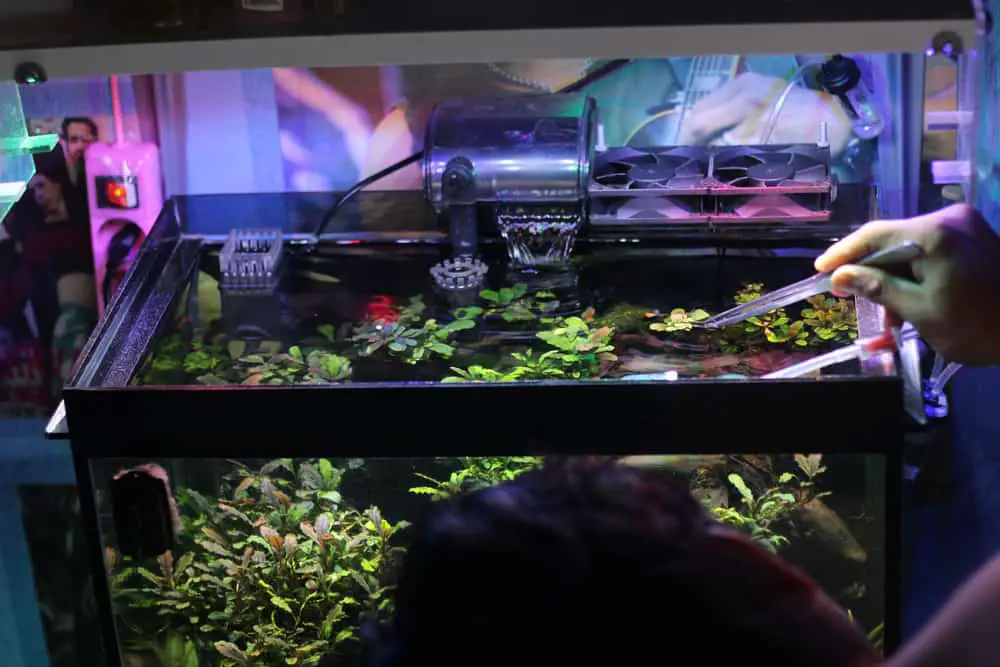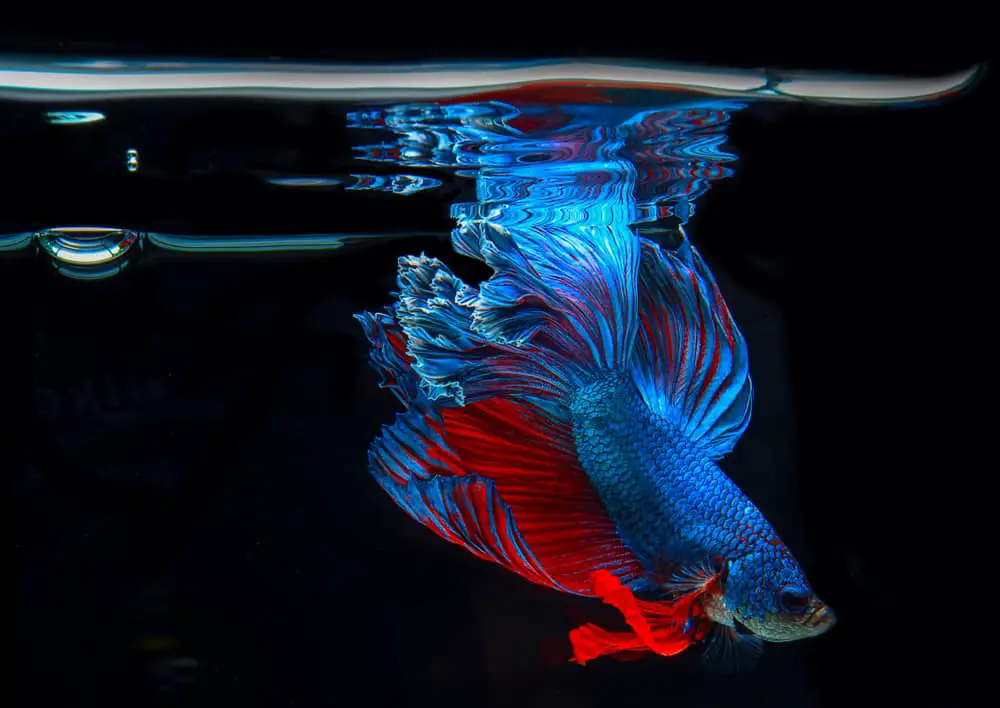Many people have fish tanks in their homes. Some owners are content with a basic tank and filter, while others take it to the next level by creating elaborate setups that resemble an underwater world. While they may seem like harmless fun for kids or adults who enjoy watching their swimming fish – fish tanks could be pretty cruel under certain circumstances.
Fish tanks and aquariums are the best enclosures for any captive fish. However, the cruelty level of these enclosures relies solely on the owner’s care and accommodation of their fish’s needs. A cruelty-free fish tank needs to provide sufficient space and oxygen, proper filtration, regular food, and other essentials to its inhabitants.
So, if you’re concerned about whether fish tanks are inherently cruel, you can rest easy knowing this isn’t the case. However, there are ways it can be a tool for animal cruelty if misused by the owner. There are also some strong arguments that these enclosures might not be cruel, but they are unethical. Read on for details on this and more.
Why Fish Tanks Aren’t Cruel
If you own or wish to own a pet fish, keeping them in a fish tank or aquarium is the most cruelty-free environment you can provide for captive care. This is especially the case when you compare the life a tank can provide versus that of a fishbowl, which is widely agreed upon to be cruel for fish.
Fish tanks can hold several gallons of water to provide their inhabitants with sufficient room to swim and explore without impeding their quality of life.
The largest privately-owned reef tank in North America holds 20,000 gallons and a whole community of reef-dwelling life. Although we certainly don’t expect everyone to make their own $700,000 tank, this demonstrates that fish tanks can come in various sizes to suit the needs of one fish to a whole ecosystem.
Of course, the tank size alone isn’t what does this. You must also pair it with other essential pieces of equipment such as:
You can access a great checklist here: Complete Aquarium Checklist for Beginners
With this equipment and other essentials, you can provide your fish with an environment similar to what they’d find in nature, but much safer from potential predators and filled with everything they need to live and thrive readily available.
It might surprise you to know that some aquariums don’t even hold a good standard with this. So please make sure you do some research before supporting one of these establishments: Are Aquariums Cruel to Animals?
How to Ensure You Have a Cruelty-Free Tank
The real “catch” with fish tanks is that the biggest and most extravagant fish tank could still be the location of animal cruelty if the fish are neglected or not compatible with the tank’s environment.
So, we’ll rephrase our previous statement to this: Every fish tank has the potential to be a cruelty-free habitat when combined with proper care from the owner and filled with all life-sustaining necessities for its inhabitants.
To help ensure your fish tank is a cruelty-free space, here are some tips to use before acquiring your fish and tank, as well as how to care for those you already have.
Research Your Fish
It all starts here, people. Before you even touch a penny in your pocket for a new, colorful, spiky, or speedy fish, you need to make sure you can provide it with everything it needs to thrive in your care.
Ethics aside, not all fish can survive in tanks and aquariums no matter what you do. Your pH levels could be consistently perfect, the water temperature unchangeable, its diet exemplary, and the poor thing could still die.
To prevent this unfortunate waste of a living creature’s life, make sure you thoroughly research the fish you want before getting it for your tank. If you already have a tank, ensure its ecosystem is compatible with the fish (for instance freshwater versus salt water), and the tank size is large enough to accommodate this addition.
For those of you who want to get started on your aquarium, we’re going to look at:
Common gold fish (Carassius auratus) | Hardest fish to support in captivity | Aquatic life that should never be in captivity |
|---|---|---|
Siamese fighting fish (Betta fish) | Kissing fish | Iridescent Shark |
Rasboras | Velvet Cichlids | Bala Shark |
Neon Tetras | Clown Loach | Common pleco |
Corydoras | Shark minnow | Pacu |
Zebrafish | Pufferfish | Red-tailed catfish |
Platies | Dwarf Gouramis | Cell |
Mollies | Pleco varieties | Cell |
Barbs | Guppies | Cell |
Bolivian Cichlids | Cell | Cell |
Kuhli Loaches | Cell | Cell |
Although size is always important when purchasing new fish, don’t overlook other factors like social needs, compatibility with other species, temperature needs, and more before adding them to your tank.
Decide Beforehand What Kind of Tank You Want
One of the most important decisions you can make for your tank is deciding what kind of ecosystem and aquatic life you want to support. Is this going to be a freshwater tank or a saltwater tank?
This decision will affect a significant number of factors, such as:
The choice between a salt and freshwater tank ultimately lies on two elements, how much money you’re willing to spend on the tank (including everything in it) and how experienced you are with fish care.
A general rule of thumb is that freshwater tanks are much cheaper and beginner-friendly than the pricy, advanced cared necessary for most saltwater fish.
So, if you’re prepared to invest some serious cash into new saltwater fish and you have the knowledge and equipment required to care for them, then go for it! If you’re still very new to fish care or have limited funds for these animals, a freshwater tank is best.
It is essential to pick one or the other as it is cruel to mix saltwater and freshwater fish without the proper precautions.
Although some species can live in both conditions, converting a freshwater fish to a saltwater tank is a tricky and lengthy process. This transition is even more difficult for saltwater fish to freshwater environments.
Placing a fish in the wrong environment could lead to dehydration, suffocation, and death, so please make sure you have the appropriate marine life in your tank.
Have the Proper Tank Equipment and Care Regimen
The only way a fish tank can truly be considered cruel is if the owner is neglectful of their fish through lack of proper equipment and/or a poor care regimen.
We previously mentioned the necessities that owners should have in their fish tanks, like a proper filtration system, heating, lighting, etc.
This is where your research is critical, so you know what your fish need so you can accommodate them. For instance, the ideal tank temperature can be anywhere from 75-78 degrees Fahrenheit for a reef tank or 78-82 degrees for a marine tropical fish aquarium.
A cold tank could cause your fish’s metabolism to slow down, resulting in lethargy, loss of color, or even death. And this is just one example of how proper equipment could mean life or death for your fish.
In addition to equipment, your fish care regimen can be monumental in their quality of life. It’s essential to regularly check the:
Much of this can be done multiple times a day using a testing kit and other equipment to ensure your fish are in the ideal environment.
You must also feed your fish regularly, according to its species’ needs. Most fish only need to be fed once or twice a day, while others need more. This largely depends on the size and activity level of the fish.
As you can see, tanks need to be regulated and taken care of properly. It’s really hard to get this right in a fish bowl. So if you’re considering down-sizing – you should think twice. Read on here for more: Why Are Fish Bowls Cruel?
Why Fish Tanks Might Be Unethical
Although cruel and unethical often go hand in hand, they don’t necessarily mean the same thing. Ethics is more centered on whether the concept is overtly just or right, whereas cruelty is based on a living being’s physical, emotional, and mental state.
While most agree that tanks are not cruel as long as they provide fish with the appropriate amount of space and resources to thrive, many argue they are still unethical.
It Is Unethical to Own a Pet That Isn’t Domesticated
Fish aren’t domesticated species like cats and dogs, and so this is often grounds for the argument that it is unethical to keep them as pets as they are wild animals that belong in a natural habitat.
The global acceptance and demand for pet fish encourage sellers to illegally catch wild fish from their natural environment to be sold as pets and confined to an XX-gallon tank.
Although some could argue that many fish species will stick to a particular area or ecosystem even in the wild, no tank can provide the same space, freedom, and natural splendors they had previous to their capture.
Fish Are Seen as Objects or Expendable Pets
Fish tanks can also be deemed unethical because they help individuals worldwide own and care for fish despite the common social mindset that these animals are more often seen as decorations or toys rather than living creatures.
A sad fact is that many owners will go to the pet store and look at the most colorful or visually attractive fish and pick that one to take home without doing a lick of research into its care requirements. These are the fish that die in a matter of days.
Although it is certainly heartbreaking for the owner (or at least it should be), many will grieve for a short while and then go out and buy a replacement.
This demonstrates the mentality that fish are more or less expendable pets. If you couldn’t keep this one alive, no worries. Flush it down the toilet so you can buy another for a few dollars and try again.
If little Suzy wants a pet, odds are parents will get her a fish before a dog because they know the child isn’t ready to care for any other pet, and the life of a fish isn’t seen as equal to that of other common animals.
This mindset is what many deem utterly unethical and leads to animal cruelty for far too many household fish.
Final Thoughts
As long as you provide your pet with the proper care and equip them with necessities such as filtration systems, your tank will be considered cruelty-free. With enough dedication and resources, you can create a tank ecosystem impressively similar to its inhabitant’s natural environment where they can live and thrive without fear for their safety or searching for food and shelter.
While an argument can be made that a fish tank is unethical, as fish aren’t domesticated animals and more often seen as objects than living creatures, the consensus on this point is entirely subjective.


